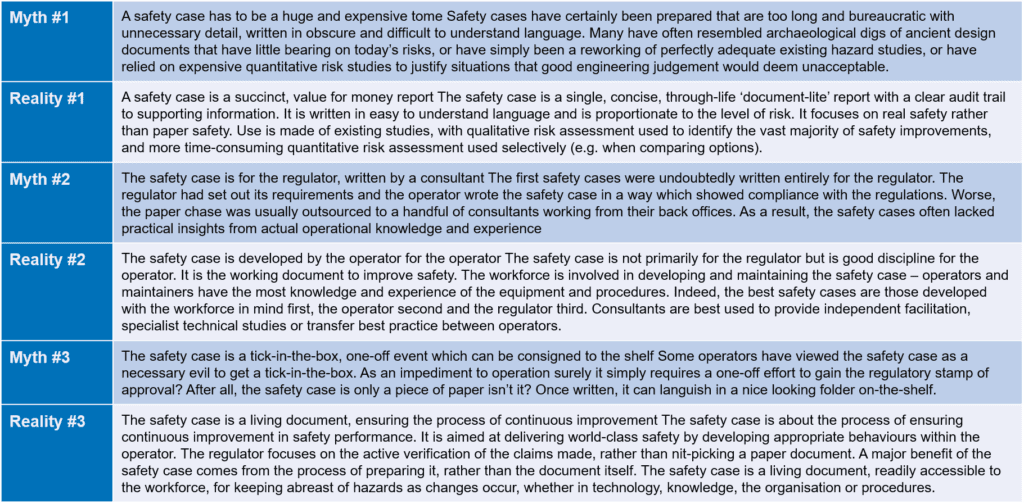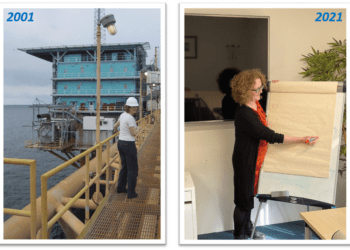Debunking safety cases – three myths and realities

A safety case aims to provide a valid and reasonable confirmation that a facility is sufficiently safe. Safety cases have been in place for many years in major hazard sectors in some regulated environments such as Europe and Australia. They have also been adopted as best practice by many international operators in other regions of the world where such legislation does not exist. What’s more, in the aftermath of last year’s explosion and oil spill disaster in the Gulf of Mexico, the US government is also currently assessing the feasibility of adopting safety cases for offshore activities.
There are many ‘myths’ or misconceptions about safety cases – some reflecting difficulties in the early years of safety cases in the 1980s and 1990s, and some still present in certain sectors, such as the UK military environment, as exposed by the recent Nimrod review [Ref. 1]. However, for every past weakness there is an opportunity to learn from experience and improve the reality of safety cases today. Below we debunk three common myths by portraying the reality of a good safety case.

SO HAVE SAFETY CASES BEEN SUCCESSFUL?
A safety case presents a high obligation on the operator, who must demonstrate an understanding of risks and prove they are under control. As such, it goes beyond compliance with prescriptive legislation or standards, to show how risks have been reduced as low as reasonably practicable. But have safety cases actually been successful? Have they been more successful than prescriptive approaches to safety? The general consensus is that safety cases have been very successful (see Ref. 2). Public inquiries into major accidents have shown that simply complying with basic standards without any real consideration of prioritizing risks caused many of the problems. Moreover, the regulator has much more impact under a goal-setting, risk-based regime than a simple ticked-box, go/no go approach.
CONCLUSION
There are no fundamental flaws in the concept of safety cases, rather there are issues around applying the concept in practice. Many of the myths of safety cases have arisen from past difficulties but, with over 20 years of practice, industry itself has created the best practice realities of today.
References
1. The Nimrod Review, Charles Haddon-Cave QC, 28th October 2009.
2. Regulatory Approaches to Offshore Oil & Gas Safety, US Chemical Safety & Hazard Investigation Board, Public Hearing, December 2010.
This article first appeared in RISKworld Issue 19








